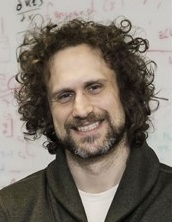Large language models could be the catalyst for a new era of chemistry

Large language models like the one behind the popular ChatGPT could transform the future of chemistry, according to a researcher at the Uuniversity of Rochester. Andrew D. White, an associate professor of chemical engineering, outlines why he believes large language models (LLMs) represent the future of the field in an article published by Nature Reviews Chemistry.
White’s research group uses experiments, molecular simulations, and machine-learning to design new materials. He has been using early versions of GPT-4 since September 2022 as part of OpenAI’s “red team,” a group of researchers hired to help mitigate the risks of artificial intelligence models by testing the platform’s capacity for harmful, illegal, or even unintended output. With the right guardrails in place, he expects GPT-4 and similar large language models to change not only how researchers connect their data, computer programs, and scientific literature, but also how they plan experiments.
“Like any emerging idea in chemistry, it will take time to see where LLMs will fit,” writes White. He adds:
They are already used in most modern reaction synthesis planner tools and have started seeing applications in explaining molecular properties—but where might LLMs go next? I believe LLMs are about to be stapled to every tool in chemistry. Akin to the creation of the internet, it is a foundational technology that will accelerate how fast a chemist can learn and use computational tools.
White notes the need to overcome key challenges with LLMs, such as the hallucination problem, in order to realize their potential. But he argues this is an exciting time to reimagine tools and experiments in the field of chemistry, and that harnessing large language models will open new frontiers for researchers.
“Clear communication in natural language is about to be the most valuable technical skill as we enter this new phase of chemistry,” he writes.
